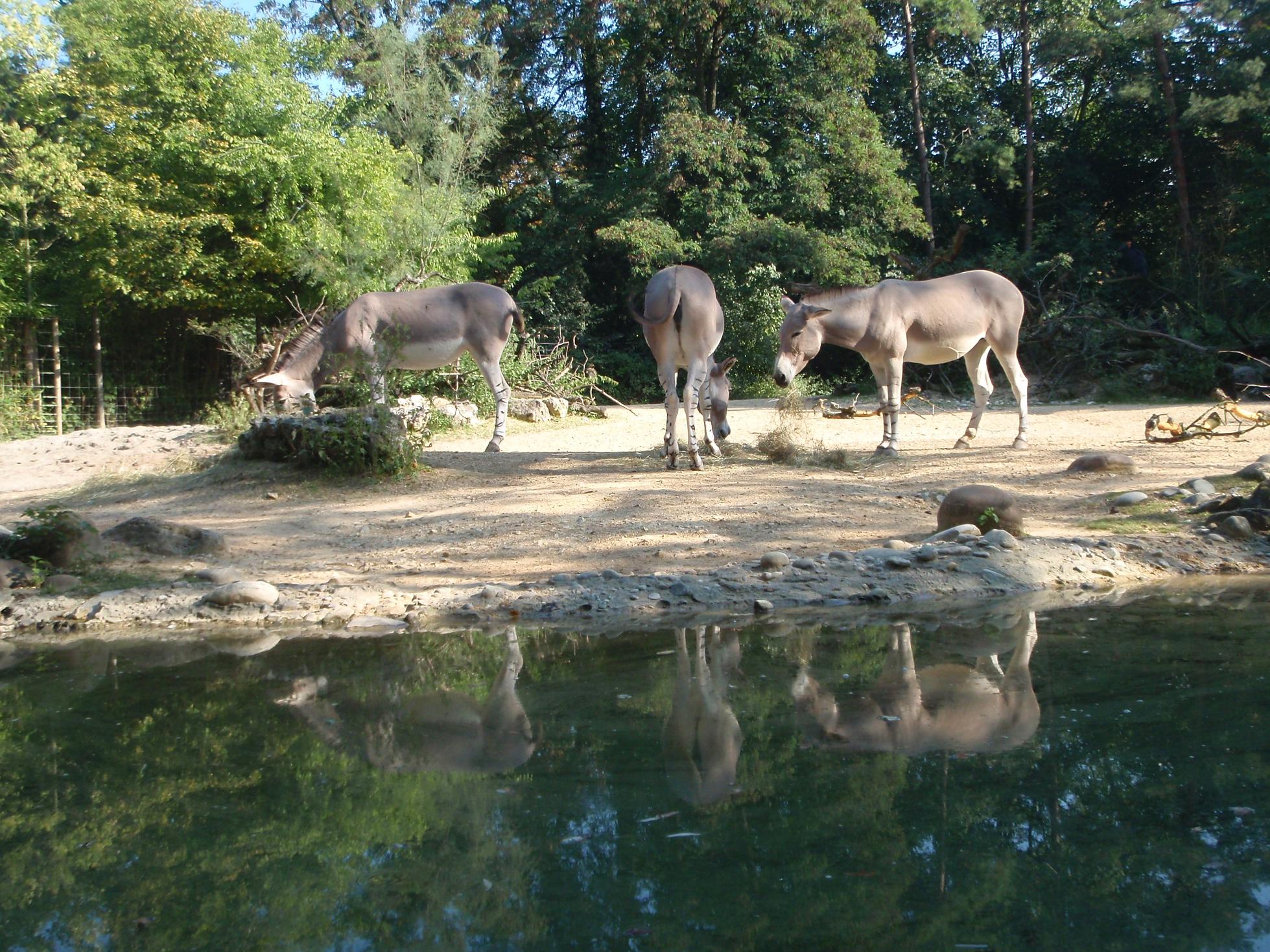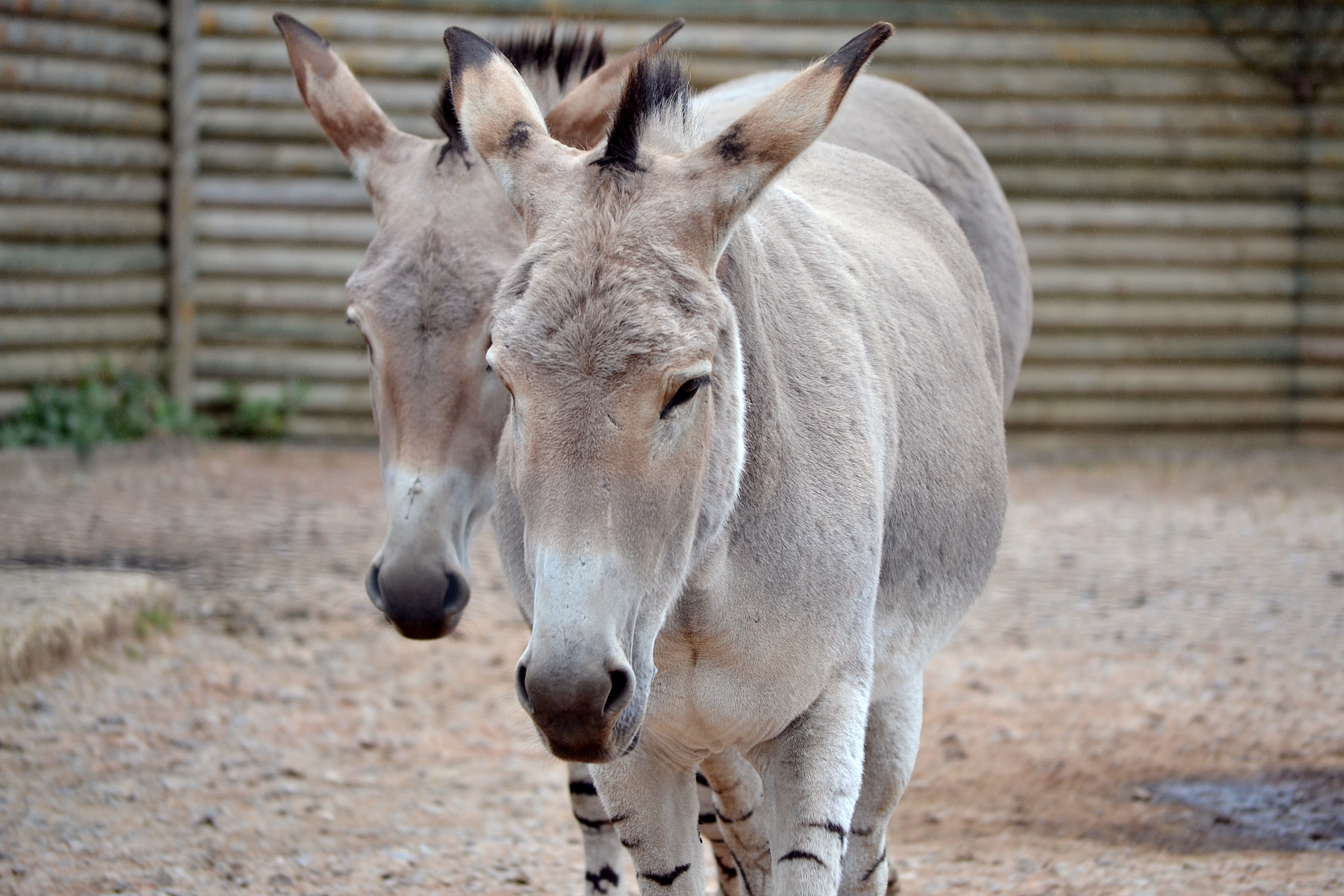Somali wild ass on:
[Wikipedia]
[Google]
[Amazon]
The Somali wild ass (''Equus africanus somaliensis'') is a
 The leading zoo for breeding the Somali wild ass is
The leading zoo for breeding the Somali wild ass is
 Domestic
Domestic
Equids: Zebras, Asses, and Horses: Status Survey and Conservation Action Plan
Gland, Switzerland: IUCN/SCC Equid Specialist Group
St. Louis Zoo: Somali Wild Ass
What's the Zoo to do with its wild ass problem?
St. Louis Post-Dispatch, accessed April 12, 2017
Somali wild ass
at Al Wabra Wildlife Preserve {{Taxonbar, from=Q603135 African wild ass Herbivorous mammals Mammals described in 1884 Mammals of Eritrea Mammals of Ethiopia Mammals of Somalia
subspecies
In Taxonomy (biology), biological classification, subspecies (: subspecies) is a rank below species, used for populations that live in different areas and vary in size, shape, or other physical characteristics (Morphology (biology), morpholog ...
of the African wild ass.
It is found in Somalia
Somalia, officially the Federal Republic of Somalia, is the easternmost country in continental Africa. The country is located in the Horn of Africa and is bordered by Ethiopia to the west, Djibouti to the northwest, Kenya to the southwest, th ...
, the Southern Red Sea region of Eritrea
Eritrea, officially the State of Eritrea, is a country in the Horn of Africa region of East Africa, with its capital and largest city being Asmara. It is bordered by Ethiopia in the Eritrea–Ethiopia border, south, Sudan in the west, and Dj ...
, and the Afar Region
The Afar Region (; ; ), formerly known as Region 2, is a Regions of Ethiopia, regional state in northeastern Ethiopia and the homeland of the Afar people. Its capital is the planned city of Semera, which lies on the paved Awash, Ethiopia, Awash� ...
of Ethiopia
Ethiopia, officially the Federal Democratic Republic of Ethiopia, is a landlocked country located in the Horn of Africa region of East Africa. It shares borders with Eritrea to the north, Djibouti to the northeast, Somalia to the east, Ken ...
. The legs of the Somali wild ass are striped, resembling those of its relatives, the zebra
Zebras (, ) (subgenus ''Hippotigris'') are African equines with distinctive black-and-white striped coats. There are three living species: Grévy's zebra (''Equus grevyi''), the plains zebra (''E. quagga''), and the mountain zebra (''E. ...
s.
Current distribution and habitat
There are likely fewer than 1,000 animals (or even 700) in the wild and the ''IUCN
The International Union for Conservation of Nature (IUCN) is an international organization working in the field of nature conservation and sustainable use of natural resources. Founded in 1948, IUCN has become the global authority on the status ...
Red List of endangered species'' described it as "critically endangered". This means they face an extremely high risk of extinction in the wild.
A few hundred specimens live in Somalia
Somalia, officially the Federal Republic of Somalia, is the easternmost country in continental Africa. The country is located in the Horn of Africa and is bordered by Ethiopia to the west, Djibouti to the northwest, Kenya to the southwest, th ...
, Somaliland
Somaliland, officially the Republic of Somaliland, is an List of states with limited recognition, unrecognised country in the Horn of Africa. It is located in the southern coast of the Gulf of Aden and bordered by Djibouti to the northwest, E ...
, Eritrea
Eritrea, officially the State of Eritrea, is a country in the Horn of Africa region of East Africa, with its capital and largest city being Asmara. It is bordered by Ethiopia in the Eritrea–Ethiopia border, south, Sudan in the west, and Dj ...
and Ethiopia
Ethiopia, officially the Federal Democratic Republic of Ethiopia, is a landlocked country located in the Horn of Africa region of East Africa. It shares borders with Eritrea to the north, Djibouti to the northeast, Somalia to the east, Ken ...
.
Reproduction
Somali wild asses typically give birth in the spring, a common characteristic among equids, after a year-long gestation. Within hours, the foal is up on its legs and keeping up with its mother. At around five days old, the foal is already nibbling grass. By the time its two weeks old, the foal is grazing regularly, however, still depending on its mother's milk for fluids. The foal is weaned by 12 to 14 months, but still stays close to its mother, only leaving to play or feed with the other foals in the herd.Behavior
Due to the limited resources found in their habitat, Somali wild asses live in a fission-fusion society. Most adults live alone, but sometimes form small herds consisting of females and their young. In areas that have more resources, or have more rain, they will sometimes fuse together to form larger temporary herds. Stallions can maintain territories as large as nine square miles. They frequently leave dung piles as markers to remind them of their territory's boundaries. While females are welcome in their territories, stallions will often fight other males who try to mate with females in their territories. However, stallions have been observed allowing males into their territories for grazing, as long as they show no interest in his harem.Captivity
Global population
, there were about 200 individuals in captivity around the globe living in 34 zoos, as well as three animals (as of 2009) in the Yotvata Hai-Bar Nature Reserve inIsrael
Israel, officially the State of Israel, is a country in West Asia. It Borders of Israel, shares borders with Lebanon to the north, Syria to the north-east, Jordan to the east, Egypt to the south-west, and the Mediterranean Sea to the west. Isr ...
, to the north of Eilat
Eilat ( , ; ; ) is Israel's southernmost city, with a population of , a busy port of Eilat, port and popular resort at the northern tip of the Red Sea, on what is known in Israel as the Gulf of Eilat and in Jordan as the Gulf of Aqaba. The c ...
. The international studbook
A breed registry, also known as a herdbook, studbook or register, in animal husbandry, the hobby of animal fancy, is an official list of animals within a specific breed whose parents are known. Animals are usually registered by their breeders w ...
is managed by Tierpark Berlin.
Zoo Basel
Zoo Basel
Zoo Basel is a non-profit zoo in the city of Basel, Switzerland. Its official name is ''Zoologischer Garten Basel'' — or in English: Basel Zoological Garden. Basel residents affectionately call it ''Zolli''.
, Switzerland. Its breeding program manages the Europe
Europe is a continent located entirely in the Northern Hemisphere and mostly in the Eastern Hemisphere. It is bordered by the Arctic Ocean to the north, the Atlantic Ocean to the west, the Mediterranean Sea to the south, and Asia to the east ...
an studbook for the Somali wild ass and coordinates the European Endangered Species Programme The EAZA Ex-situ Programme (EEP) is a population management and Ex situ conservation, conservation programme by European Association of Zoos and Aquaria, European Association of Zoos and Aquaria (EAZA) for wild animals living in European zoos. The p ...
(EEP) – as well as the global species committee of the Somali Wild Ass since 2004.
Zoo Basel started keeping Somali wild asses in 1970 and had its first birth in 1972. Since then, 11 stallions and 24 females (as of 2009) were born and survived childhood. Today, all Somali wild donkeys in captivity are related to the original group at Zoo Basel.
As of January 18, 2012, there are four Somali wild donkeys in Basel: The stallion "Gigolo" (3) and three females (among them "Yogala"-14).
France
Since 1987, the Réserve Africaine de Sigean, in the south ofFrance
France, officially the French Republic, is a country located primarily in Western Europe. Overseas France, Its overseas regions and territories include French Guiana in South America, Saint Pierre and Miquelon in the Atlantic Ocean#North Atlan ...
, has had a number of Somali wild asses, with births occurring regularly, including two on June 30, 2010, and March 29, 2013.
United States
Only six institutions breed Somali wild ass in theUnited States
The United States of America (USA), also known as the United States (U.S.) or America, is a country primarily located in North America. It is a federal republic of 50 U.S. state, states and a federal capital district, Washington, D.C. The 48 ...
: Dallas Zoo, Saint Louis Zoo, San Diego Zoo Safari Park
The San Diego Zoo Safari Park is a zoo and safari park in Escondido, California, Escondido, a suburb of the city of San Diego, California, located in San Pasqual Valley, San Diego, San Pasqual Valley. Opened in 1972, the park operates as a sis ...
, Zoo Miami, Denver Zoo Conservation Alliance and White Oak Conservation in Yulee, Florida. White Oak received a herd in 2008 as part of an international effort to save Somali wild ass from extinction. Since then, the herd has produced 18 foals, including several born in spring 2013. The Dallas Zoo has just had two Somali wild ass foals, both female, one born July 9 and the other on July 19, 2017. The Saint Louis Zoo's most recent birth was on July 30, 2019.
The San Diego Zoo Safari Park is home to eleven Somali Wild Asses, the largest population of Somali Wild Asses in North America. The park received its first herd from the Basel Zoo in 1981. Their first foal was born in 1986. Since then, 49 foals have been born, the most recent being a female born on March 17, 2018. San Diego Zoo Global also works to help save this endangered species in the wild.
Domestication
 Domestic
Domestic donkey
The donkey or ass is a domesticated equine. It derives from the African wild ass, ''Equus africanus'', and may be classified either as a subspecies thereof, ''Equus africanus asinus'', or as a separate species, ''Equus asinus''. It was domes ...
s found in Italy
Italy, officially the Italian Republic, is a country in Southern Europe, Southern and Western Europe, Western Europe. It consists of Italian Peninsula, a peninsula that extends into the Mediterranean Sea, with the Alps on its northern land b ...
are typically descended from the Somali wild ass, as opposed to those from other European countries where domesticated stock are usually descended from the Nubian wild ass.
Conservation
A conservation project (mainly supported by Zoo Basel) in Eritrea counted (before 2014) 47 Somali wild asses living in the mountains between the Buri Peninsula and the Dallol Depression, which is within the largerDanakil Depression
The Danakil Depression is a large valley of approximately , across the north of the Afar Region of Ethiopia and Eritrea. It is about below sea level and is bordered to the west by the Ethiopian Plateau and to the east by the Danakil Alps, bey ...
, near Eritrea's border with Ethiopia.
As mentioned above, a protected population of the Somali wild ass exists in the Yotvata Hai-Bar Nature Reserve. This Israeli reserve was established in 1968 with the view to bolster populations of endangered desert species.
Notes
References
* Moehlman, Patricia D. (ed). 2002Equids: Zebras, Asses, and Horses: Status Survey and Conservation Action Plan
Gland, Switzerland: IUCN/SCC Equid Specialist Group
External links
St. Louis Zoo: Somali Wild Ass
What's the Zoo to do with its wild ass problem?
St. Louis Post-Dispatch, accessed April 12, 2017
Somali wild ass
at Al Wabra Wildlife Preserve {{Taxonbar, from=Q603135 African wild ass Herbivorous mammals Mammals described in 1884 Mammals of Eritrea Mammals of Ethiopia Mammals of Somalia